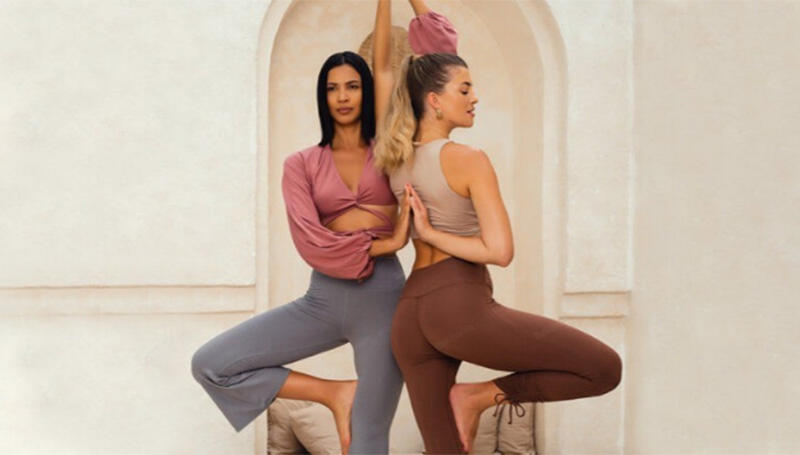The Evolution of Athleisure
In the last ten years, one can observe that many products are not only used for wearing during sport activities but also for the everyday wear. This change has been often attributed to the increase in the ‘athleisure’ market which includes designs of apparels for both, casual wear and sportswear. Yoga clothes especially, have carved a niche for itself in the dresser of many individuals who look out for comfort, functionality and style. Tracing the evolution of athletic wear as fashion wear, the idea of wearing yoga wear beyond the yoga studio was once a rather radical thought in the market but is now well and truly accepted in the market.
Comfort Meets Style
Another fact that has seen yogurt wear evolved into being worn as casual wear are the comfort levels that transcend those of any other outfit. Yoga pants, leggings and tops are usually made of fabrics that are light, flexible, stretchable and skin –friendly like spandex, lycra and other related fabrics. For this reason, they are suitable for a variety of uses including as daily errands, walking, and as casual wear at home. Thus, the manufacturies of yoga clothes have incorporated Spartan and sporty looks, but the clothing is quite adaptable to various ensembles. With proper styling, leggings can be worn from a workout to coffee as high-waisted leggings look best tucked into a tunic or accessorized with a fashionable crop top.
Versatility and Functionality
The third aspect also inhibits the permissiveness of yoga apparel to be more acceptable to be worn in conventional contexts; flexibility. Yoga gears are produced using fabric which allows the body to breathe, dry faster, and designs with little seams that make yoga wears perfect for yoga, workouts, and other occasions. At one time, it is simple to wear an outfit and perform several tasks all through the day without the need to change clothes frequently. Additionally, the majority of yoga clothes is provided with some useful extras like pockets, mesh inserts, and, sometimes, flexible bands at the waistline.
Social Approval and Celebrities’ Impact
Another reason is people and social media: celebrities were also noticed wearing clothes for practicing yoga as casual wear. Some of them feel comfortable wearing yoga pants and other types of active wear on the streets; therefore, celebrities and fashion influencers always set emerging trends. What would have been reserved for the gym alone is now worn as casual wear, and in some occasions as slightly formal wear. This is true now such that yoga wears are noticeable in offices, particularly, in organizations whose setting is not strictly formal or corporate.
Addressing Criticisms and Concerns
While this practice is loved by millions, those who decided to wear yoga clothes for casual occasions have attracted criticism. Others believe that it is a way of shirking work, and can be interpreted as slovenly in the workplace and other professional settings. It is also feared that the wearing of tight clothes for long could impair ones posture and skin although most high-quality brands adopt ergonomic form and skin-friendly fabrics. To overcome these issues, it is a matter of asking when it is right to wear yoga apparel, where it is right to wear them and getting superior quality apparels that can serve both the purpose of comfort as well as health.
The Bottom Line
As the last point, it is possible to say that today dress for yoga practice has a sense of evolution as a trend, for it has evolved from perceiving yoga clothes as solely relevant to the practice of yoga to accepting it as an everyday attire, to the ease of wear. Yoga wear is capable of being functional when worn in the right circumstance but helps in many ways to consider it trendy. The more modern outfits became casuals, the more the public recognized this with other trends of comfort and without losing sight of style. In that sense, it is reasonable to affirm that yoga pants are not fad. This is a tendency initiated by the fashion world which in recent years is increasingly oriented towards consumer satisfaction.
 EN
EN
 AR
AR BG
BG HR
HR CS
CS DA
DA NL
NL FI
FI FR
FR DE
DE EL
EL IT
IT NO
NO PL
PL PT
PT RO
RO RU
RU ES
ES SV
SV CA
CA TL
TL ID
ID LV
LV LT
LT SR
SR SK
SK UK
UK SQ
SQ ET
ET GL
GL HU
HU TR
TR FA
FA MS
MS GA
GA CY
CY IS
IS KA
KA
